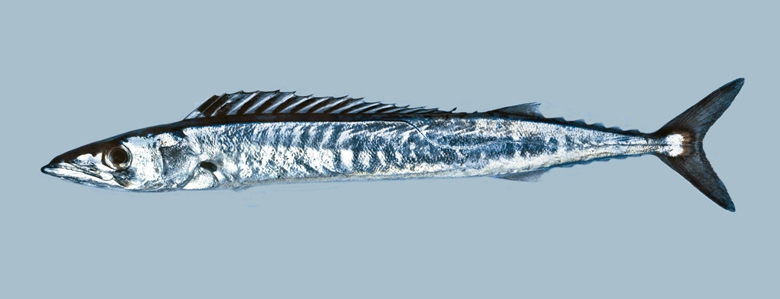General Description
Body elongate, dorsal and anal fins followed by 5-6 detached finlets; tail base without fleshy lateral keels; teeth pointed, upper jaw with 3-4 fang like teeth at front and row of smaller triangular teeth laterally. Steel blue on back, silvery below, first dorsal fin black, margins of soft dorsal and pectoral fins black. To 1.4 m.
Biology
These voracious predators are commonly seen in large schools. They feed on krill and small schooling fishes. The species was the focus of early fisheries along the Victorian and Tasmanian coasts.
Habitat
Warm temperate waters, usually at the surface when inshore, sometimes entering estuaries and open bays, to depth of 120 m.
Open water
Distribution guide
Southern Hemisphere. Southern Australia.
Species Group
Fishes › Barracoutas and gemfishes
Depth
Shallow (1-30 m)
Deep ( > 30 m)
Water Column
Max Size
1.4 m
Diet
Carnivore
Harmful
Not thought to be harmful but potential for injury from sharp pointed teeth.
Commercial Species
Yes
Global Dispersal
Recorded in Australia
Conservation Status
- DSE Advisory List : Not listed
- EPBC Act 1999 : Not listed
- IUCN Red List : Not listed





